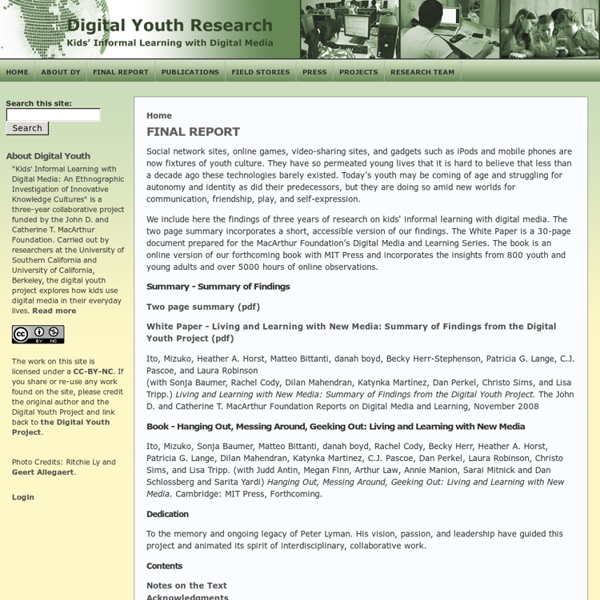DIGITAL YOUTH RESEARCH

John Seely Brown: Chief of Confusion
Youth, Privacy and Reputation (Literature Review) by Alice Marwi
Many adults worry about children and teenagers’ online privacy, predominantly due to a perception that youth put themselves at risk for harassment and solicitation by revealing personal information, usually to marketers or on social networking sites (Aidman 2000; Giffen 2008; Read 2006). First, commercial websites and advertising networks are said to manipulate children into providing personal data which is bought, sold, and used for monetary gain (Cai & Gantz 2000; Montgomery & Pasnik 1996; Moscardelli & Liston-Heyes 2004; Youn 2009). Second, recent privacy worries are centered around secrecy, access, and the risks that “public living” on sites like Facebook, MySpace, and YouTube poses from educational institutions, future employers, pedophiles, and child pornographers (Palfrey et al. 2008; Lenhart & Madden 2007; Youn 2009). Often, young people are viewed on one side of a generational divide (Herring 2008).
Confessions of an Aca-Fan: The Official Weblog of Henry Jenkins
new article by Lev Manovich: "Trending: The Promises and the Challenges of Big Social Data"
Trending: The Promises and the Challenges of Big Social Data (PDF). In this article I address some of the theoretical and practical issues raised by emerging “big data”-driven social science and humanities. My observations are based on my own experience over last three years with big data projects carried out in my lab at UCSD and Calit2 (softwarestudies.com). The issues which we will discuss include the differences between “deep data” about a few and “surface data” about the many; getting access to transactional data; and the new “data analysis divide” between data experts and the rest of us. ---------------------------- Reference: Lev Manovich. "Trending: The Promises and the Challenges of Big Social Data."
10 Iconic Steve Jobs Moments [VIDEOS]
The career of one of America's most innovative businessmen has been more than just a string of moments, but these 10 peeks at Steve Jobs's formidable presence will remind you of why his resignation is such a momentous event. From his cocky early days launching Macintosh, to his triumphant return to the company, to his jeans-and-black-shirt days of the iPod, iPhone and iPad — he kept keynote attendees and employees alike on the edge of their seats until his last "one more thing."
Related:
Related:



